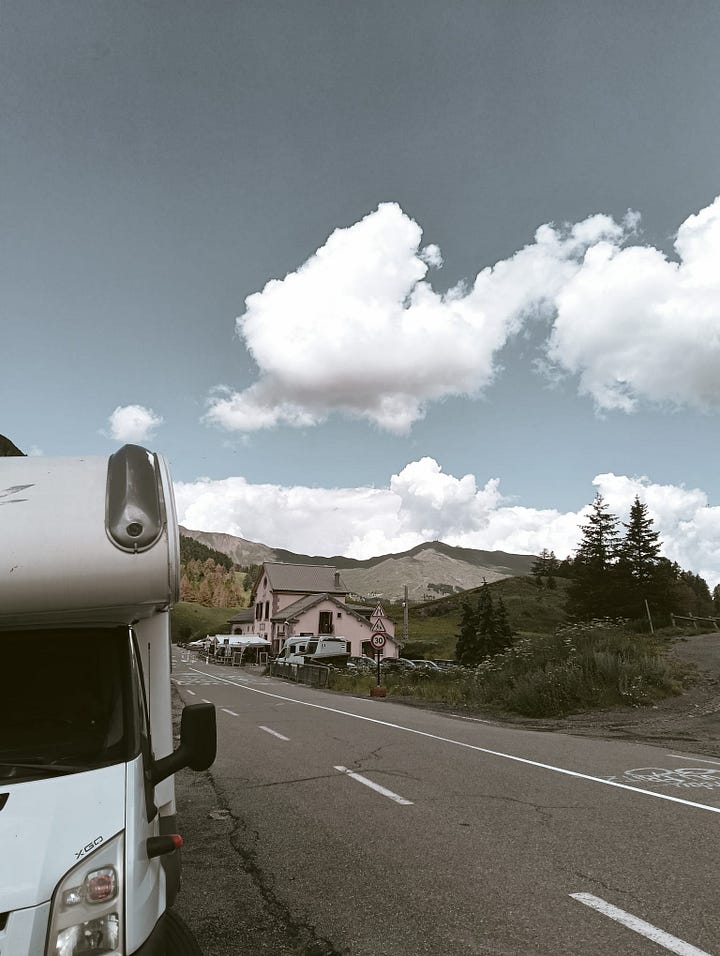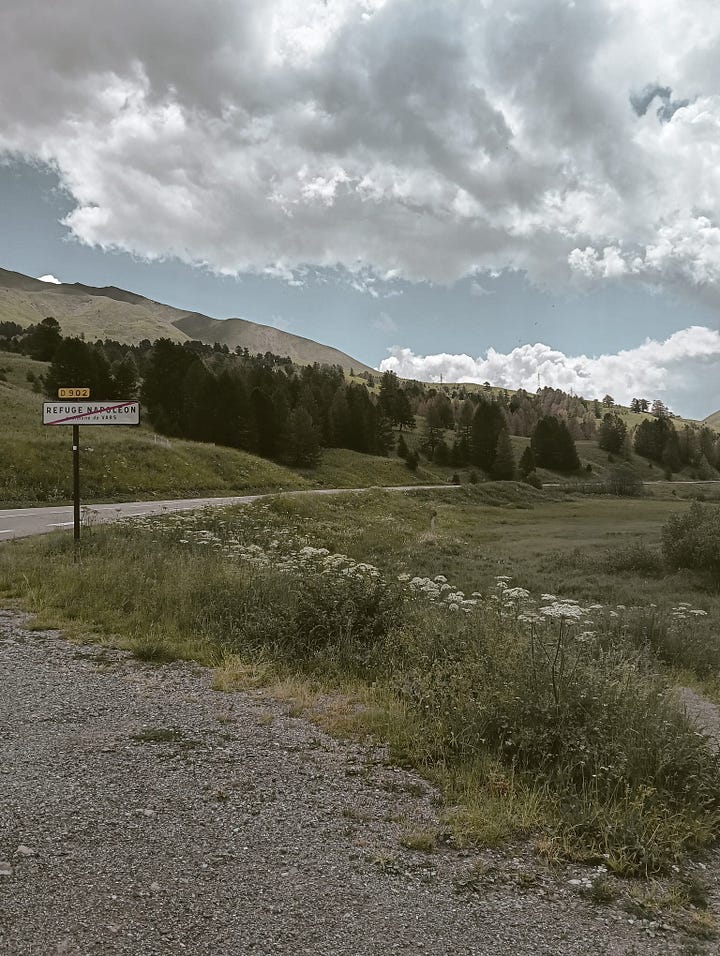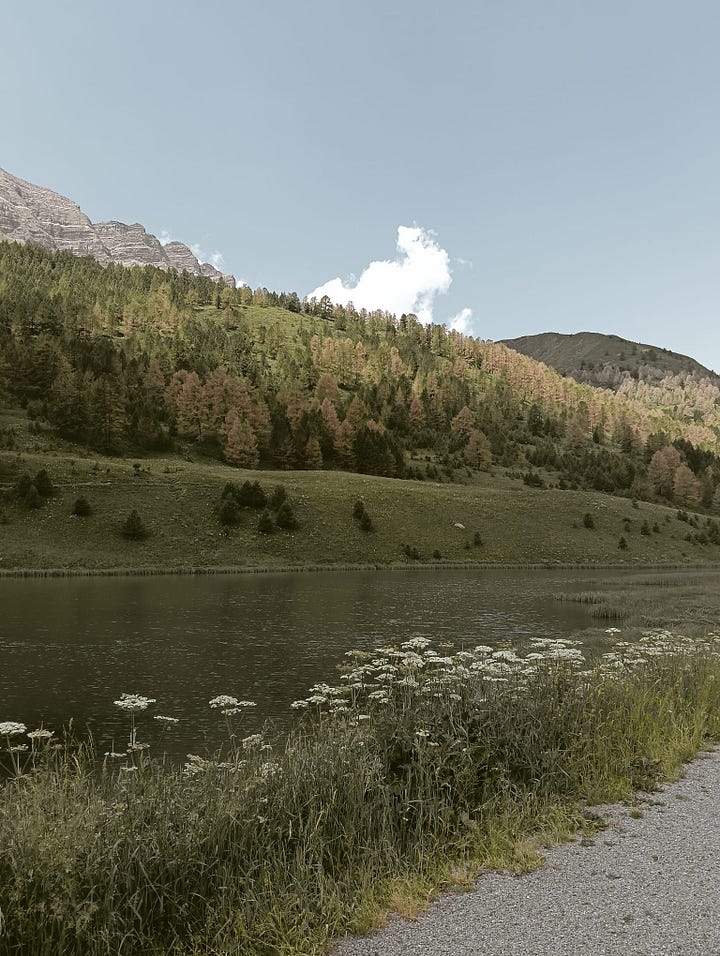Back on the Road, Rooted in Tradition: My Journey Through Tuscan Flavors:
Pici All’Etrusca: Ancient Pasta, Fresh Flavors, and Family Memories
After a break from the road, I’m back on the move. July marks the start of a new leg of my journey—three more months of travel through France, the UK, and wherever else this next chapter takes me.
Between May and June, I paused. I spent those weeks in Tuscany, taking time to slow down, reset, and reconnect with my roots. No big adventures—just quiet days spent taking care of the garden, cooking with my grandparents Lorenzina and Mario, and diving into old family recipes. I rewrote, studied, and experimented with dishes I’ve known since childhood—some exactly as they’ve always been, others with small updates that feel like mine.
I’ll be sharing some of those recipes with you along the way.
The first is a dish that feels deeply tied to the region I come from: Pici all’Etrusca. It’s simple, handmade, and full of flavor, thick strands of pasta rolled by hand and it carries the essence of Tuscan cooking: earthy, seasonal, and made with care.
This recipe is my way of bringing a piece of home with me as I head back out into the world.
More soon, from the road.




History of Pici
Pici are the essence of Tuscan cucina povera, humble, handmade, and deeply rooted in tradition. They're thick, rustic noodles made from just flour, water, a touch of olive oil, and a pinch of salt. While they might resemble spaghetti in shape, they’re completely different in texture and feel: dense, irregular, and satisfyingly chewy. Each one is rolled by hand, one at a time, which gives them their distinctive character and a texture that holds up beautifully to a wide range of sauces, from simple garlic and oil to rich, slow-cooked ragù.
The sauce in the original "pici all’etrusca" is based on a bold, herbaceous green pesto made by blending garlic, parsley, mint, and basil with Pecorino cheese and the yolk-free part of a hard-boiled egg. It’s full of flavor, punchy and aromatic, and coats the pasta in just the right way.
Pici have ancient origins, dating back to Etruscan times, you can even find a depiction of something remarkably similar carved into a 5th-century BCE funerary monument. So when we make them, we’re not just making pasta ,we’re continuing a centuries-old ritual that’s been passed down through generations.
The process itself is simple in theory, but like most traditional techniques, it requires practice. After forming a well of flour, you slowly add water, a bit of oil, and salt, kneading until the dough is smooth and elastic. Then comes the shaping: small portions of dough are rolled out by hand into long, slightly uneven strands, a motion we call appiciare. The movement needs to be soft and continuous to keep the dough cylindrical without flattening or tearing it.
In Tuscany, pici are a staple. They appear on Sunday family tables, at local restaurants, and at food festivals across the region. Making them is a kind of quiet celebration of where we come from, and sharing them, even more so.
Pici all’Etrusca
Hand-rolled pasta with a vibrant herb and pecorino sauce, a dish rooted in ancient Tuscan tradition.
There’s something deeply grounding about making pasta with your hands. Pici, a rustic pasta from southern Tuscany, embody the essence of cucina povera, simple ingredients, shaped with care, passed down through generations. No machines, no rush, just flour, warm water, and your hands.
Ingredients
For the Pici:
3 ⅓ cups (400 g) all-purpose flour
A pinch of salt
1 teaspoon extra-virgin olive oil
¾ to 1 cup (180–240 ml) warm water (enough to form a firm dough)
For the Herb & Pecorino Sauce:
1 hard-boiled egg, whites only, chopped
½ cup fresh flat-leaf parsley (loosely packed)
20 fresh basil leaves
10 fresh mint leaves (adjust to taste)
1 ½ cups (150 g) fresh Tuscan pecorino cheese, cubed or grated
¼ cup (60 ml) extra-virgin olive oil, plus more to finish
Salt and freshly ground black pepper, to taste
How to Make It
1. Prepare the Dough
Start by making a well in the center of the flour on a large wooden board or countertop. Sprinkle in a pinch of salt and drizzle in the olive oil. Slowly pour in the warm water, a little at a time, and begin to incorporate it into the flour using your fingers or a fork.
Knead the dough with your hands for about 8–10 minutes, until it becomes smooth, compact, and firm, you want a dough that holds its shape but is still pliable. Adjust with a little more flour or water as needed.
Wrap the dough in a cloth or plastic wrap and let it rest for 30 minutes at room temperature. This rest makes the dough easier to work with.
2. Shape the Pici (The Traditional Way)
After resting, cut off small portions of dough and begin rolling them out one by one.
On a wooden surface (the texture helps grip the dough), take each piece and gently roll it out with your palms into long, slightly uneven ropes, about the thickness of a pencil. This technique is called “appiciare” in local dialect. The movement should be smooth and continuous, using light pressure so the dough stretches evenly without breaking or flattening.
The charm of pici lies in their imperfection, no two strands are the same.
Dust with flour to prevent sticking and set aside on a floured tray while you shape the rest.
3. Make the Herb & Pecorino Sauce
In a food processor or blender, combine the chopped egg white, parsley, basil, and mint. Add the pecorino cheese and season with a little salt and pepper.
Begin blending, then slowly drizzle in the olive oil until the mixture becomes a thick, spoonable paste, like a rustic pesto. Taste and adjust seasoning. If it’s too thick, add a splash of warm water or more oil.
4. Cook the Pici
Bring a large pot of salted water to a boil.
Cook the pici for 4–5 minutes, or until al dente. They should be soft but still chewy. Because they’re hand-rolled and slightly thicker, they have a wonderful bite.
Reserve a bit of the cooking water before draining.
5. Toss and Serve
In a warm bowl or skillet, toss the pici with the herb and pecorino sauce, using a bit of the reserved pasta water to help it coat evenly.
Just before serving, tear a couple of fresh basil and mint leaves with your hands and scatter them over the top. This last-minute touch adds a burst of brightness and brings the whole dish to life.
Thank you so much for reading this post! I can't wait to continue my journey and explore new places with you, always carrying a piece of Tuscany with me and with you.
Thank you all so much for your incredible support on this journey. If you enjoy reading my stories and want to help me keep writing, even a small contribution through Buy Me a Coffee means the world to me. Your support makes this adventure possible!








Sounds so delicious! I love pici 🥰 The hard boiled egg whites in the pesto is so fascinating, I’ll have to try this!
Sounds delicious- I grew up with my Dad making homemade pasta- there’s nothing better! This looks so good! Happy Travels! Look forward to seeing where you go! We may be in the Bordeaux countryside in late July!